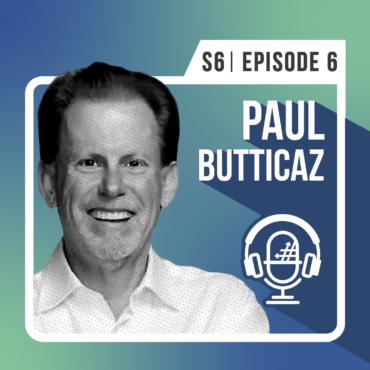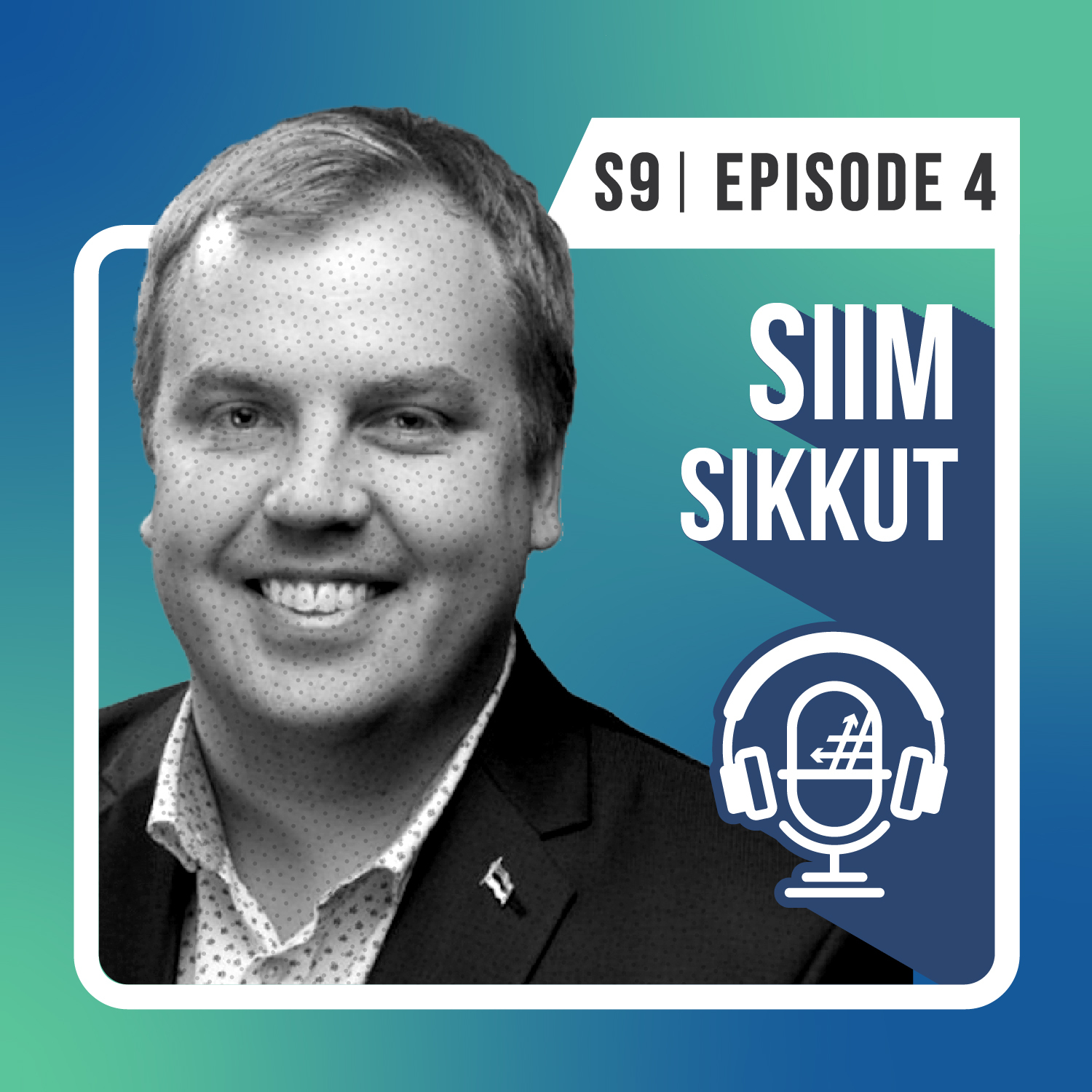S6 E5: Delivering IT Consistency After a Merger with Paul Butticaz

It’s often a good thing when smart people and strong organizations come together. But if these groups aren’t using the same collaboration solutions, it’s safe to say there will always be a disconnect. This problem will complicate any business merger, so it’s critical for IT leaders to deliver tools and training to ensure everyone is on the same page.
Today, I’ll speak with Paul Butticaz, Enterprise Architect for Modern Workplace Services at Truist, now the six largest bank in the US due to a 2019 merger, to talk about some of the strategies Paul used to bring tens of thousands of people together and how you can replicate that success.
Ready to invest your time for his story?
In this episode:
40 years back…
I started in this industry a long, long time ago. Starting back in the early eighties, as I came out of school, I have seen a lot of change over the years. 40 years ago, the focus was around mainframes, big IBM, big Amdahl, big Honeywell equipment, and then all the way through the technology changes with mini-computers, and then ultimately into distributed computing with laptops and PCs and so on.
…to 20 years ago, and today.
20 years ago, we used email predominantly to push documents—in many cases, Microsoft Office documents—back and forth. We used file servers, file shares, and we used something known as a SharePoint portal services.
What I found interesting is, we are still collaborating that way today, even on our journey to the cloud. So 20 years later, a whole lot hasn’t changed at least for financial services. But we’re headed in the right direction.
The Merger
Truist is the merger of SunTrust and BB&T. It’s a fairly large banking merger—in fact, it’s the largest one in 20 years—and together, we are going to be number six. This has really been a long journey to bring these two large banks together, so our primary focus is the merger and all the work in regards to it.
The challenge is, at the same time, COVID came in and really challenged the teams from a collaboration perspective. As I mentioned, we’re still collaborating like we used to many years ago. We have folks that are doing WebEx sessions, we have folks that are doing Skype meetings, we’re using email or SharePoint to move documents back and forth.
We probably would have waited to move to the cloud and to Microsoft 365, but because of COVID, we were forced to provide better collaboration capabilities for our teammates.
Microsoft 365 adoption considerations
We actually have been down this road—adopting Microsoft 365—a couple of times, believe it or not. We were headed in this direction a couple of years back prior to the merger.
But one of the things that we have to seriously consider is how there’s all kinds of audits that are going on within financial services. Obviously, we have to meet all of our security and compliance requirements before moving workloads to a SaaS service like Microsoft 365.
Because we’re highly regulated and have various concerns around FINRA, the SCC, as well as the FDIC, FSIs or financial service companies are slow to adopt newer technologies, especially cloud-based ones.
The risk of oversharing
In this industry, oversharing is a very serious risk. If you incorrectly share documents, whether it’s internally or externally, with the wrong folks and they get something that’s got PII data, customer information, account numbers, or whatever it might have, and it gets into the hands of the wrong individual, that’s not going to be a good day.
Also, when you have an investment banking and capital market groups like Truist does, you also have something referred to as information barriers. And that’s why it was really, really important how Microsoft has really worked with the financial services industry to bring capabilities to Microsoft 365—first to Teams, and then ultimately into SharePoint/OneDrive.
Balancing productivity with security
But at Truist, it’s not one size fits all. I mean, again, Microsoft has done an amazing job at bringing additional capabilities into their suite of products that sit in Microsoft 365, but there’s still some gaps there. So, you need to layer on additional solutions.
Bringing in third-party capabilities, like AvePoint products which are extremely well in providing other data protection layers, will be important to meet data regulations that you may not otherwise be able to with AIP or some of the other data protection capabilities native inside of Microsoft.
Accelerated adoption caused by the pandemic
When the pandemic happened and we pushed people to work from home, it was significant because we had a lot of folks that didn’t even have laptops. We had folks that had desktops in the office, so we had to react quickly and figure out how we could get these folks online, because basically as you well know, the country was shut down and we had to keep our business running. It rose this opportunity for us to accelerate the program.
If COVID had not happened, we likely would have waited to deploy Microsoft 365 and Microsoft Teams. I even realized that Teams does not just focus on meeting and web conferencing and live events and so on. It’s so much more. It’s really that what I call a workstream collaboration platform where we’re able to work and collaborate with documents in real time as if you’re sitting in the same room with somebody.
And to be honest with you, I don’t know if we’ll ever return to the same style of work that we had in the past. We’re shifting as well where a lot of teammates will work remotely permanently in certain roles. We’re definitely into a new normal here.
The importance of adoption and change management programs
We’ve seen it from one end of the spectrum to the other. We have folks that are early adopters. They’re the change champions. They love this kind of stuff. But then you have the other end of the spectrum and everything in between where we have people that are reticent to try to jump in and they fall back on old habits.
But at the end of the day, a well-developed adoption and change management program will help porgrams like this to succeed. It wasn’t about the technology and the server infrastructure anymore. It’s about how well you provide adoption and change management services. Because this is not a one and done thing. This is ongoing for as long as you’re in these more modern workplace SaaS services.
Making #ShiftHappen
Your resources will be key. Depending on the Microsoft relationship you have and what type of support you get from them, you can have access to fast-track resources that can help you deploy and sustain that environment. You have great partners like AvePoint as well that have a heavy focus on these more modern collaboration platforms.
Also, don’t roll out everything at the same time. That’s a mistake I made in my career. Microsoft is this big bohemus with couple of dozen, if not more, different services and applications, so don’t go in and try to do all of it at one time because that’ll overwhelm your end users or your teammates, and you won’t have a good feedback.
Last but not least, I would say get your network ready for these cloud services. It’s not the traditional hub and spoke model that we’re used to coming from your VAX days or my IBM and Honeywell days and mainframe days. That’s not going to cut it when you’re working with these Software-as-a-Service platforms, whether it’s Microsoft or it’s Salesforce or it’s Service Now, all of these SaaS services require a different approach when it comes to the network.
Today’s takeaway from Paul:
“SaaS applications are constantly changing. If you don’t keep your Adoption & Change Management program going, eventually it’s going to fall apart. It’s really super critical that you have a group in your organization that focuses on this full time.”
Subscribe where you get your podcasts! Search for “#ShiftHappens” in your favorite podcast app.
With over 20 years of business and technology experience, Dux has driven organizational transformations worldwide with his ability to simplify complex ideas and deliver relevant solutions. He serves as the Chief Brand Officer of AvePoint who has authored the LinkedIn Learning course How to Build Your Personal Brand, the book SharePoint for Project Management, as well as numerous whitepapers and articles. As a public speaker, Dux has delivered engaging, interactive presentations to more than 25,000 people at leading industry events around the world. He also hosts the modern workplace podcast #shifthappens that focuses on how leading organizations navigated their business transformation journey. Dux advocates tirelessly for inclusion, using technology for good, and philanthropic initiatives. Connect with him: http://dux.sy



